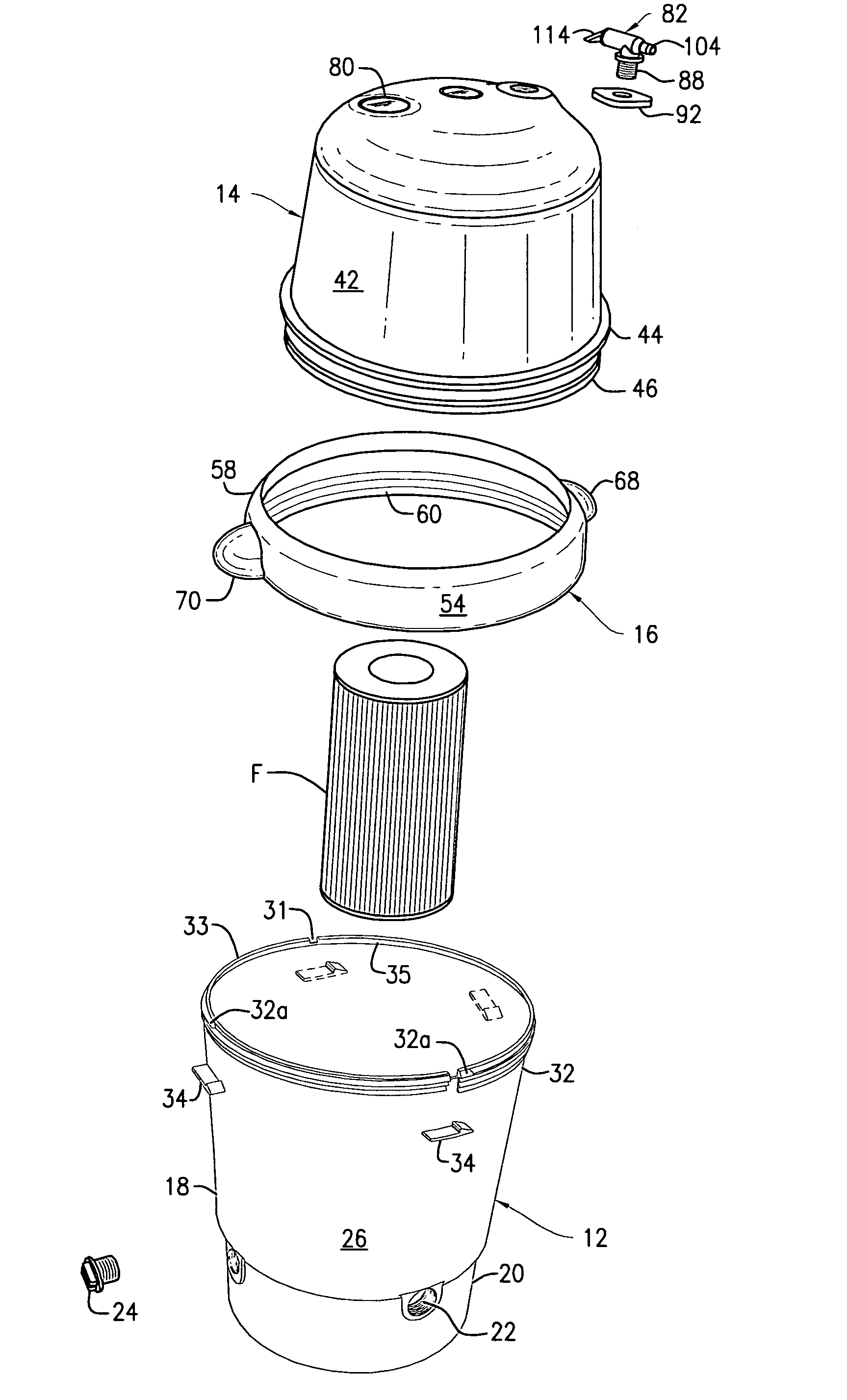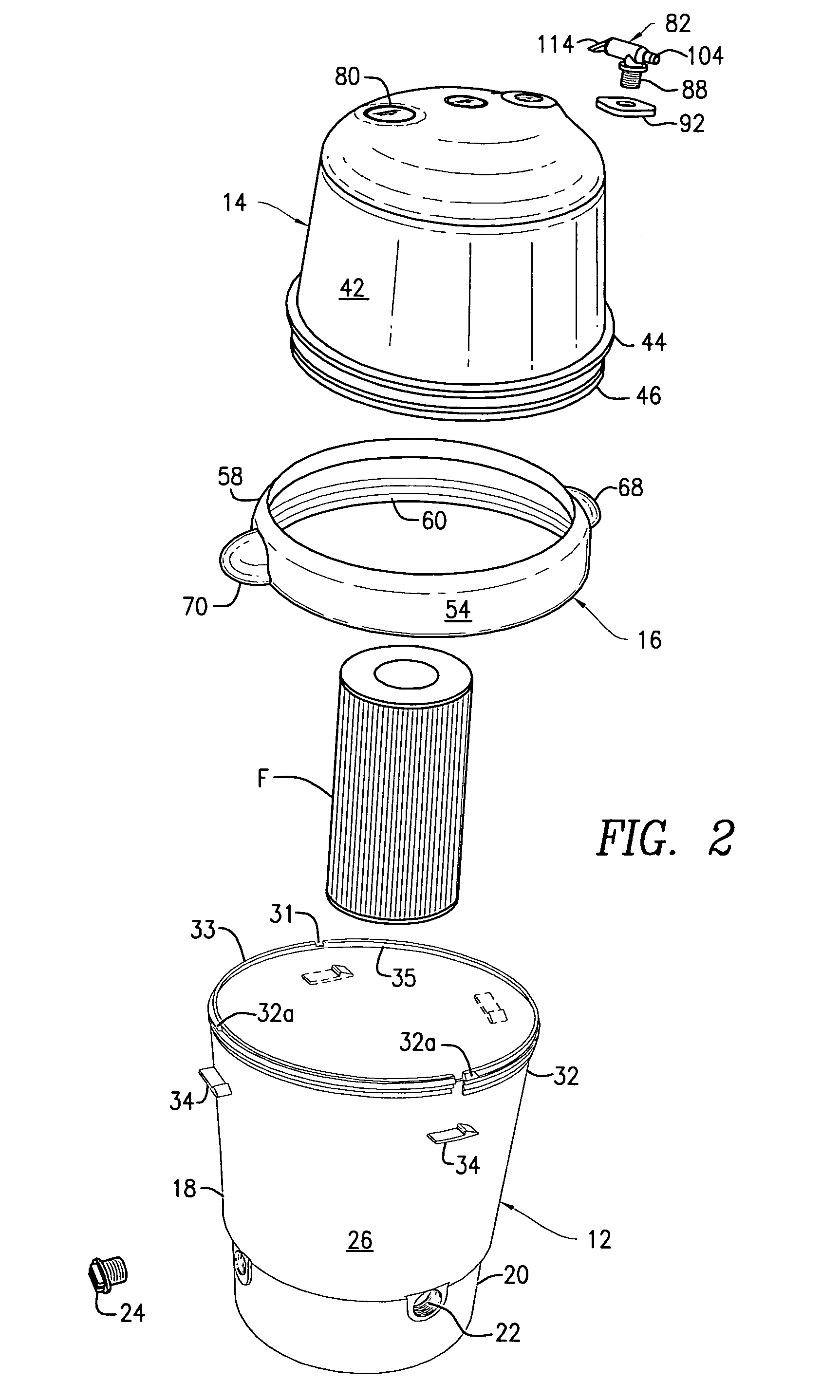Filter housing and parts therefor
a filter housing and filter technology, applied in the direction of filtering separation, moving filter element filters, separation processes, etc., can solve the problems of unknown filter housings, suffer from various problems and disadvantages, and the interior wall of the housing does not promote highly efficient filtration, so as to achieve greater radial distance and enhance filtration efficiency
- Summary
- Abstract
- Description
- Claims
- Application Information
AI Technical Summary
Benefits of technology
Problems solved by technology
Method used
Image
Examples
Embodiment Construction
[0025]FIGS. 1-3 and 5 illustrate a filter housing 10 constructed in accordance with the present invention. The filter housing 10 includes a base 12 and a cover 14 which has an integral securing or locking ring 16 for removeably securing the cover 14 to the base 12. The base 12 is rounded, with a generally oval cross section as a result of the machining process and the materials used. The base 12 has an upper portion 18 and a lower portion 20. The lower portion 20 has standard filter housing features, including an outlet 22, an inlet (not shown) and a drain plug 24. The upper portion 18 comprises an annular wall 26 and a floor 28 (see FIG. 3), which separates the upper portion 18 from the lower portion 20. A hollow vertical support 30 extends upwardly from the floor 28, and may be integrally formed therewith so as to be in communication with the outlet 22 (see FIG. 3). The vertical support 30 is sized and shaped so as to receive a bottom opening of a cartridge filter F thereon. The u...
PUM
| Property | Measurement | Unit |
|---|---|---|
| pressure | aaaaa | aaaaa |
| flexible | aaaaa | aaaaa |
| diameter | aaaaa | aaaaa |
Abstract
Description
Claims
Application Information
 Login to View More
Login to View More - R&D
- Intellectual Property
- Life Sciences
- Materials
- Tech Scout
- Unparalleled Data Quality
- Higher Quality Content
- 60% Fewer Hallucinations
Browse by: Latest US Patents, China's latest patents, Technical Efficacy Thesaurus, Application Domain, Technology Topic, Popular Technical Reports.
© 2025 PatSnap. All rights reserved.Legal|Privacy policy|Modern Slavery Act Transparency Statement|Sitemap|About US| Contact US: help@patsnap.com



